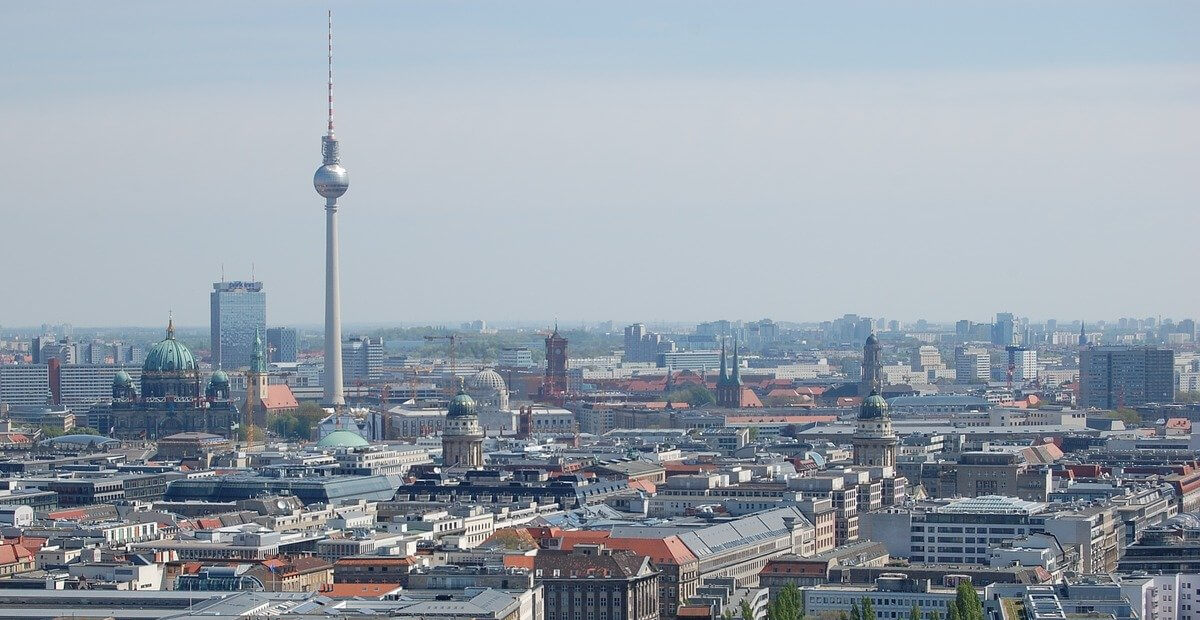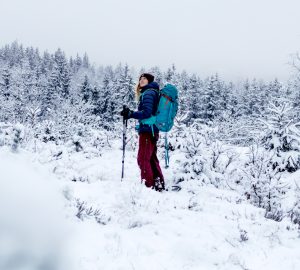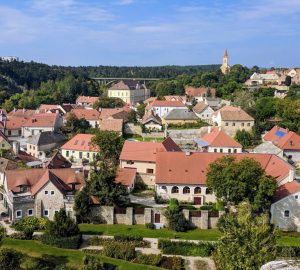When you think of Berlin, you probably have wide streets, smoky clubs and exciting urban culture in mind rather than green meadows, forests and mountains. It’s deceptive! Even though the German capital is also the largest in the country, you can still spend carefree hours in the countryside.
Admittedly, you won’t find any altitude difference in Berlin. Instead, the city has several city forests, parks and lakes that will make you forget the urban canyons and traffic. We’ll take you on a journey of discovery through Berlin’s (not at all) hidden green lungs.
Grunewald
Grunewald covers an area of 3,000 hectares in the southwest of the city. Here you will find winding forest paths and wide forest roads as well as a lot of water. Grunewald borders on the beautiful Havel river to the west and is criss-crossed by a large number of smaller lakes. The most famous of these lakes is the Krumme Lanke, an absolutely idyllic gem where you can spend some sunny days splashing and chilling.
If you feel like climbing a mountain: Berlin’s second highest elevation, the Teufelsberg, you will also find here. At the top you can let your gaze wander over the Grunewald forest – or over the roofs of Berlin, depending on the direction and weather. By the way, this is also where Berlin’s mountain bikers ride on some cool built trails. There’s also an abandoned listening station that spreads a bit of a gloomy end-time mood and which you can explore with a guided tour.
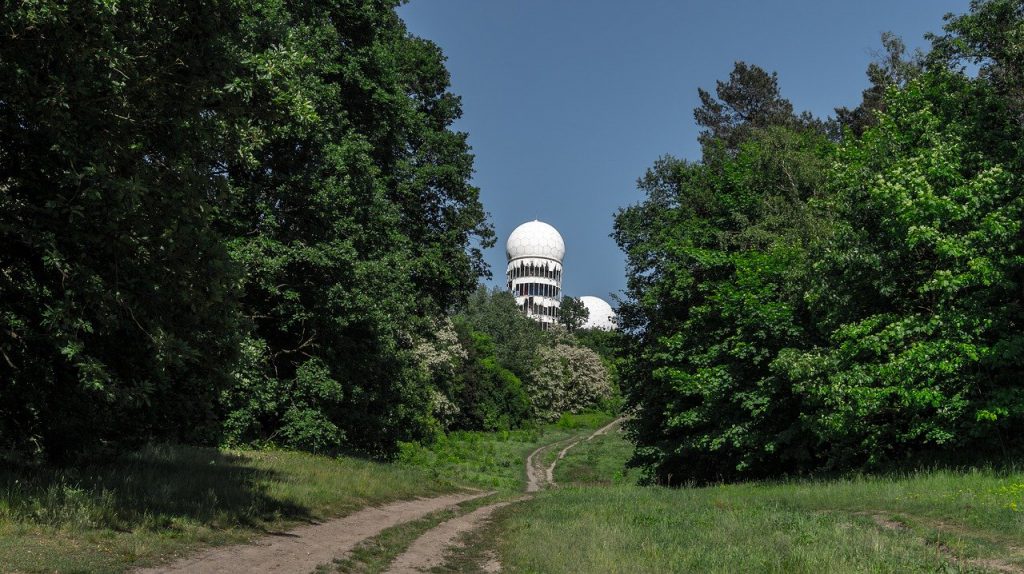
That’s how you get there:
There’s a city train station (S-Bahn) called Grunewald that takes you to the eastern edge of the forest. The S3, S5 and S7 stop there. But with such a large area of forest, it probably depends on where you want to start your hike. So it’s best to find out for yourself before you leave.
Treptower Park, Plänterwald and the Isle of Youth
A little closer to the city and directly on the Spree you will find this wonderful combination of park and city forest. The Treptower Park captivates with wide, green meadows for sitting, playing and sunbathing as well as a colossal, old Soviet monument, which you should definitely take a look at. At the southern end of Treptower Park you will also find the Isle of Youth (Insel der Jugend), a real little island in the Spree River, which can be reached via a romantic bridge. On the island there is another lovingly designed park, which invites you to take a stroll, have a picnic and enjoy the view of the Spree.
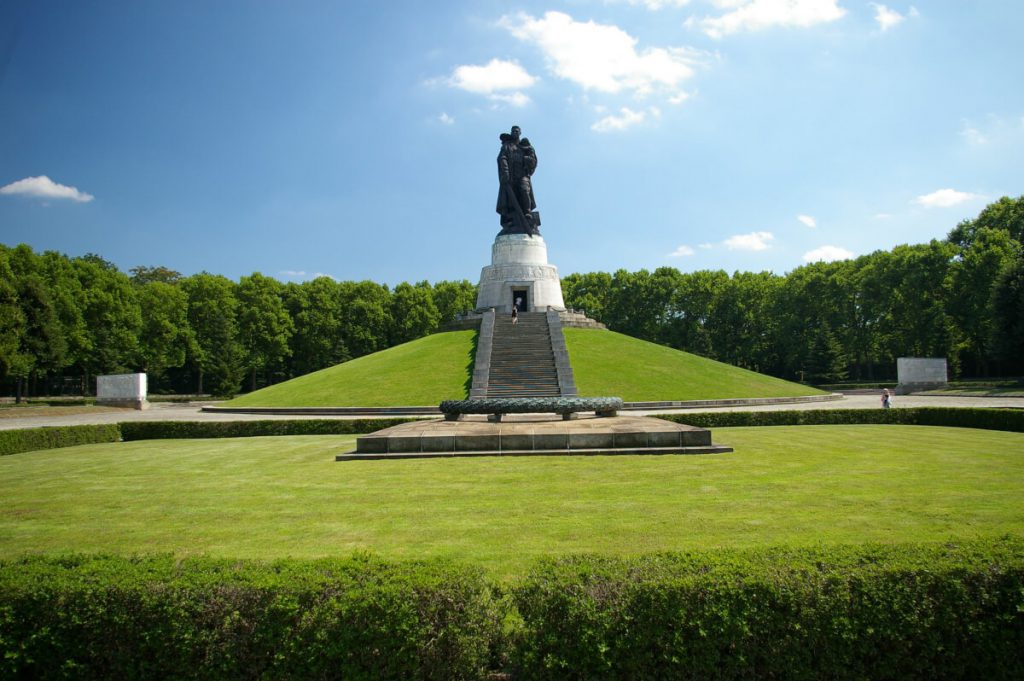
In the south the Plänterwald is adjoining. In the warm months, the Plänterwald is a green retreat, criss-crossed by small paths and clearings, where you can take a breath and relax. In spring the unique Berlin wild garlic overgrows the entire ground around the still bare trees and is picked and processed by many Berliners. Near the Spree you can also take a look at an abandoned theme park including a Ferris wheel and from April to November you can also explore it with a guided tour. Soon a new public park is to be created here, carefully combining nature, culture and art.
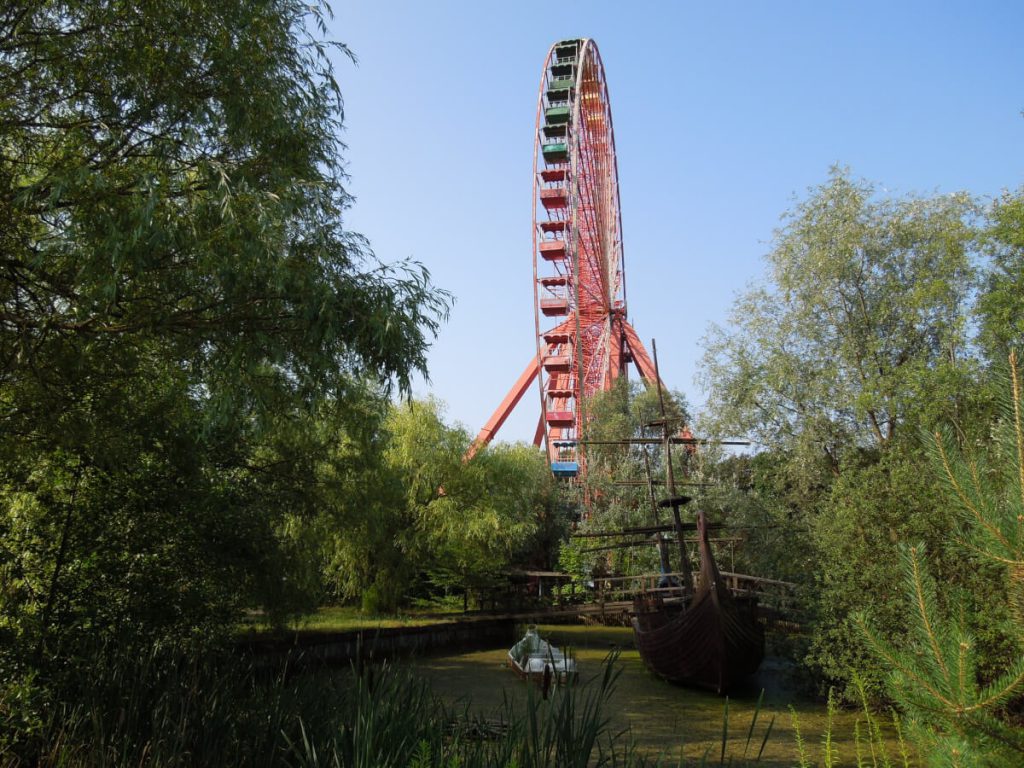
That’s how you get there:
Take the Ringbahn to Treptower Park station or the S8/S9/S85 to Plänterwald station. The two areas are connected, so it depends on where you can reach the countryside faster.
Tempelhofer Feld
The Tempelhofer Feld is only partly green and you will only find a few trees, but the sky here is so wide that you forget for a moment that you are in a city of millions of people. The old airfield of the Tempelhof airport lay fallow for a long time and is now used as a public place for a few years.
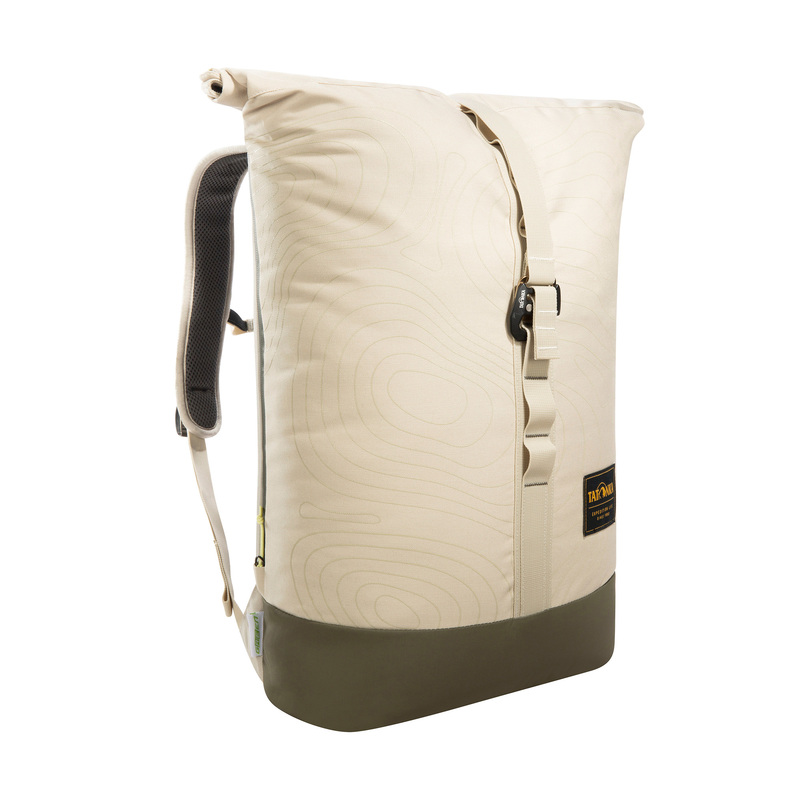
The City Rolltop by Tatonka is with its 27 liter volume and its numerous features the perfect companion for your next city trip. And best of all: thanks to its recycled materials and PFC/PFAS-free impregnation, the City Rolltop is kind to the environment.
Whether you just want to stroll along the wide, endless runway, try out kitelandboarding, explore one of the urban gardening projects or simply soak up the sun with a beer in your hand – all this is possible there, making the field a unique place that combines urbanity and the longing for the great outdoors in the centre of Berlin.
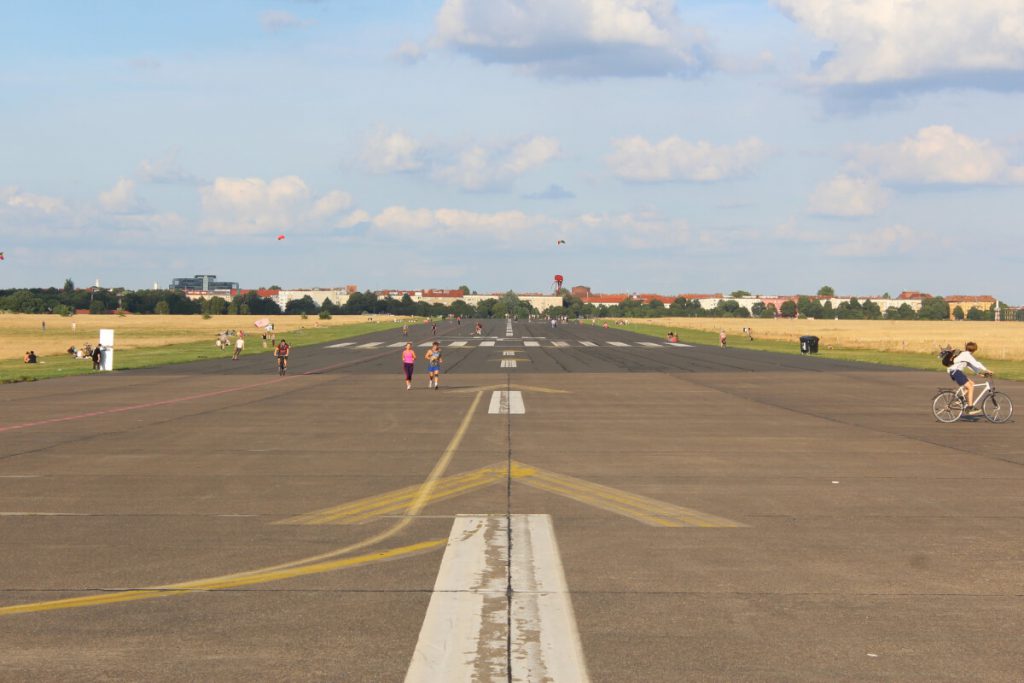
That’s how you get there:
Since Tempelhofer Feld is located in the middle of the city, you can reach it easily by public transport from almost every side. The next stops are Boddinstraße (U8) and Leinestraße (U8) in the east, Südstern (U7) in the north and Tempelhof station (Ringbahn, U6) or Paradestraße (U6) in the west. In the south the field is bordered by the city highway and an industrial area.
Gardens of the World (Gärten der Welt)
The Gardens of the World in Marzahn are also not a complete escape from nature, but instead are a park designed with great attention to detail. Here you can discover parks and gardens that have been designed according to models from all over the world. From the impressive Oriental Garden to the Chinese Garden to the Los Angeles Park, which was conceived as a criticism of industrialisation, there is a lot of new things to discover – the Gardens of the World is virtually a large open-air museum for urban garden culture.
Particularly impressive is the Tropical House, which hosts the Balinese Garden. Here a complete jungle with useful plants, exotic flowers and Hindu temple elements has been recreated to give you an understanding of the naturalness of Bali’s gardens. Here you are guaranteed to forget Berlin for a while.
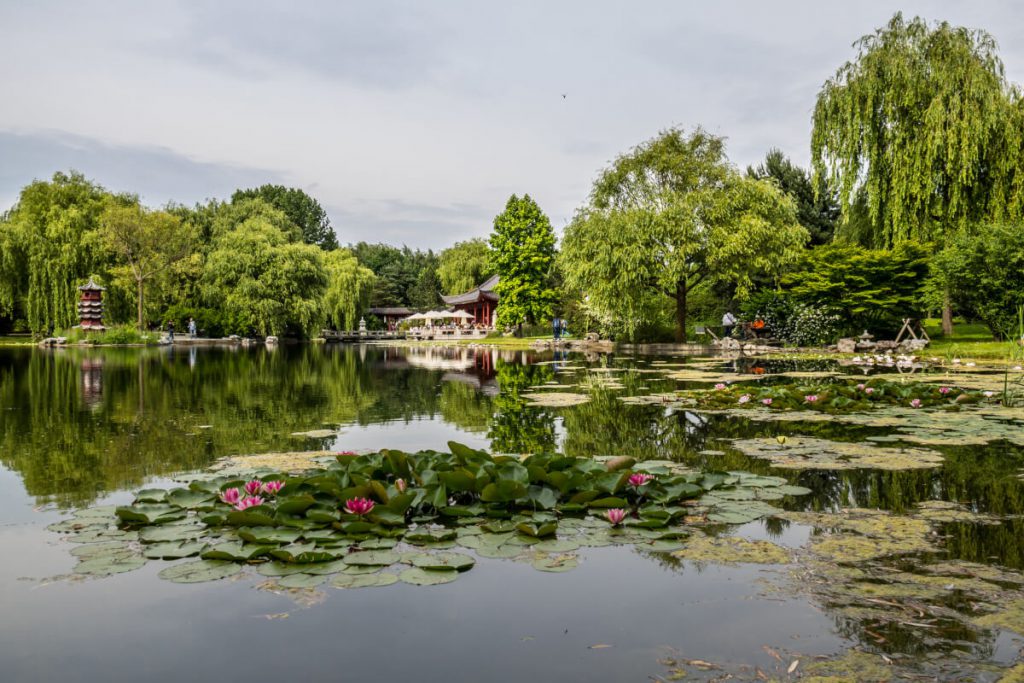
That’s how you get there: The Gardens of the World are just outside the center. From Alexanderplatz you can either take the U5 and bus 195, the S7 and tram M8 or M6. All three connections take you to Marzahn in about 45 minutes.
Müggelberge and Müggelsee
Berlin’s largest lake is not the famous Wannsee in the west – it is the enchanting Müggelsee in the southeast of the city. It invites to various water sports and with its numerous bathing places for swimming and sunbathing. To the south are the Müggelberge, another large forest area. Here you can lose yourself on hiking trails, climb the two (natural!) Müggelberge mountains and explore the surrounding smaller lakes and the Dahme.
Also worth reading: Paddling in the Spreewald – By canoe through the Spreedelta
By the way, cycling to Müggelsee is a wonderful way to get to know the south-east of the city and the surrounding area. From Kreuzberg, you first cycle along the Spree, then take the BVG-powered ferry (!) in the Plänterwald to the other bank, leaving the city further behind with every kilometer you ride. For the last few kilometers you either take quiet side roads through charming, no longer urban-looking districts or through city forests and parks such as the Wuhlheide.

That’s how you get there: If not by bike, you can take the S-Bahn. The S3 and S5 will take you to Köpenick, from where you can either continue on foot or change to bus 169 to the charming stop “Rübezahl”. Then you are already in the middle of it.




